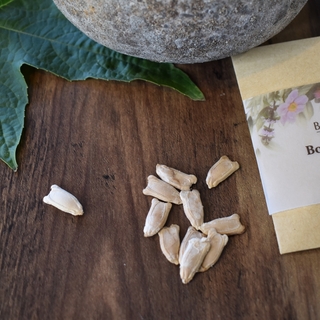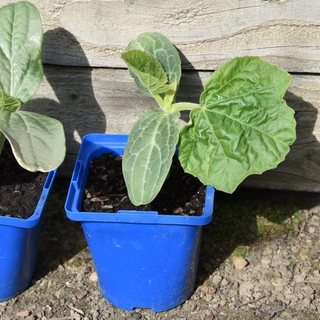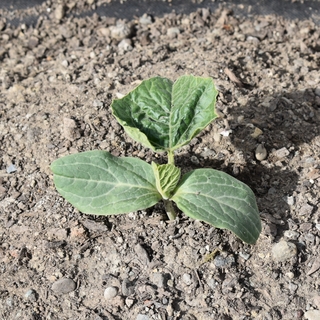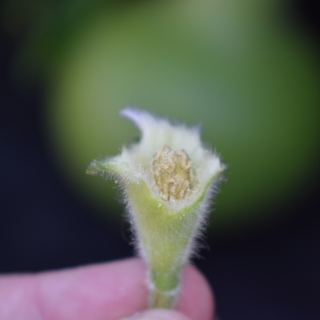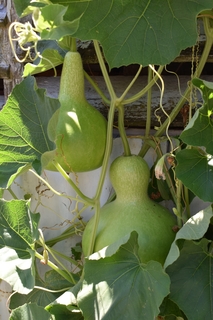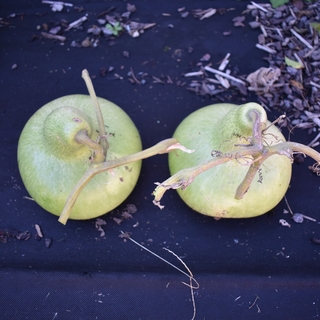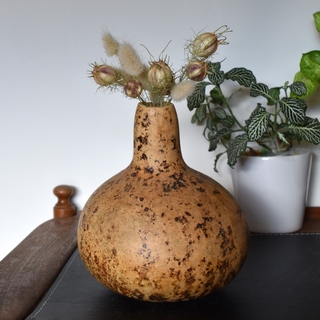Growing Bottle Gourds In A Temperate Climate
Growing bottle gourds in a climate with frosts.
The key to growing gourds is to create the longest season you possibly can so if you live in an area with frost, it's advised to start the gourd seeds off indoors or undercover and plant out only after the last frost has past. Depending on what area you live, if it's in a cooler climate, the seedlings may sit dormant for a bit after planting until the soil warms up but you'll still have enough time to grow a great crop of gourds.
Gourd Seeds
Important for successful seed germination: Choose the fattest seeds. Soak seeds for 24 hours or overnight - you can use the saucer method as in pic below or just place in a cup of warm water and leave to soak, this will speed up the process of the seed sprouting otherwise it can take up to 10-14 days.
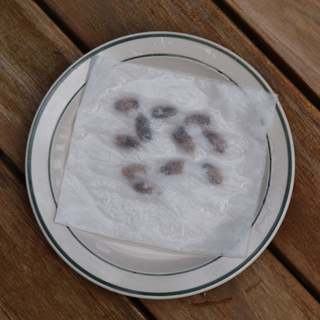
Sow at 2cm deep into seed raising mix with one seed per nursery pot / individual seedling container (black preferably), seedling trays or cell trays are way too small.
Transplant once they grow their first leaves (what comes after the sun leaves) as they don’t like to have their roots disturbed. Keep in a warm sunny spot out of the frost. They’ll need lots of space like a cucumber, melon or pumpkin plant (they’re all in the cucurbit family) so plant out about 1 - 1.5 metres apart. Bottle gourds are heavy feeders so prepare the soil with lots of compost and aerated soil, then regular feeding every two weeks.
Growing structure for gourds
You can let the gourds grow on the ground but if you live in an area with higher rainfall in the fall, you can use a solid structure to grow on. Deer fencing or a chain link fence is ideal as it can handle the weight whereas chicken wire is too flimsy and will need something else to hold the weight of the gourd when they're green and heavy. We grow on the ground and use bricks to lift each gourd up of the ground near the end of the season.
Pollination
You may need to hand pollinate to ensure you get a good crop. The gourd will grow from the female flower with the bulbus under the flower.
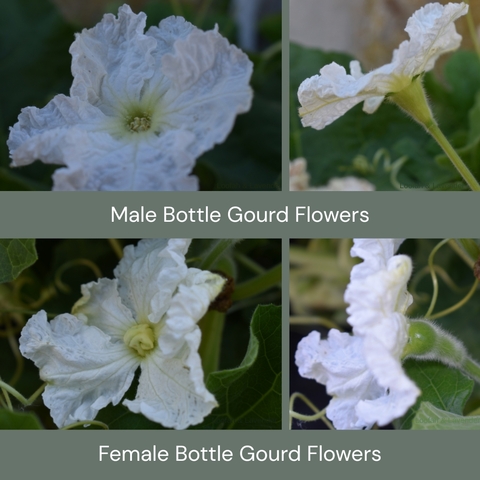
The male flower has the stamen that generates the pollen, pick one of the male flowers and peel back the petals to reveal the pollen and carefully insert into the pistil (female) to pollinate.
If pollination has occurred the bulbus will continue to grow into a gourd, if not it will shrivel up.
Feeding
Gourds, like all cucurbits, are heavy feeders. Feed every two weeks if you're able to - this could be with a liquid fertiliser, a vegetable plant food or a compost/manure addition around the plants. Add mulch around the base of the plant to protect the soil. We use a sheep pellet mix that not only feeds the soil but also creates a crust to protect it.
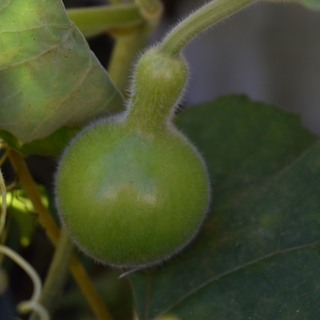
When to harvest:
It's best to leave the gourds on the vine for as long as you can - at the end of the season the vine will start to take all the moisture back out of the gourd to assist it in drying, if you harvest the gourd too early then you'll have to air dry and it takes much longer. Leave until the leaves begin to wither and die off and the stem turns brown. You can feel the gourds start to lighten up. The sun and rain will also help harden off the gourds and cure the outside but there's a fine line between drying out in the weather and leaving them to rot. Leave about 10 inches of stalk on the gourd if you can.
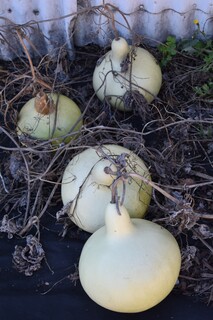
Drying:
The gourds will still need to finish the drying process under cover for at least a couple of months. You can sit or hang somewhere dry with good airflow like a carport. Don't dry inside unless it's very well ventilated as the gourd still has a lot of moisture that slowly evaporates out and can cause dampness and mould in the house.
We use shelving out on a covered balcony away from the rain where we rotate once a week to avoid any soft spots or rotting. Airflow is important.
You'll be able to feel the difference between a dry gourd and one that's needs more time. A dry gourd will be brown, feel very light, sound hollow when you tap on it and you'll be able to hear the seeds when you shake - it's ready to start cleaning and creating.
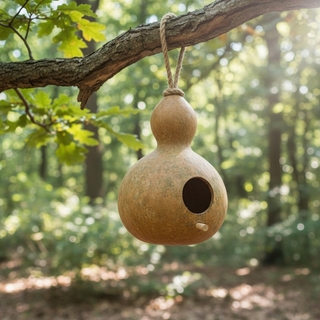
Growing gourds is lods of fun, you can see the growth almost daily.
Posted: Wednesday 15 October 2025


